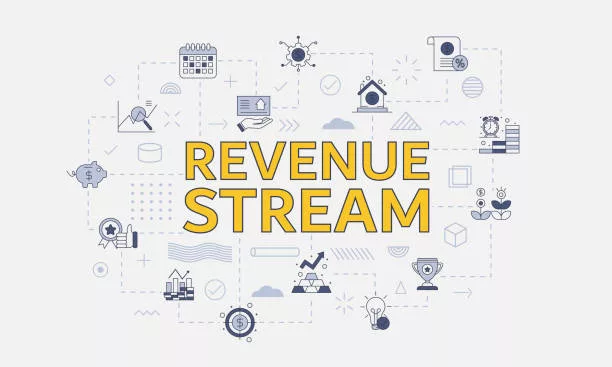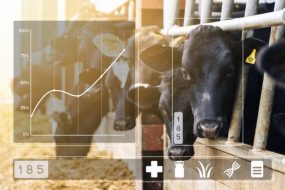As a farmer, you know that managing the finances of your agricultural business is no small task. From purchasing seeds and equipment to maintaining livestock and handling unforeseen challenges, there’s a constant need to balance the books. But fear not, because, in this article, we’ve gathered 10 proven farm finance tips that will not only help you keep your farm financially stable but also boost its overall profitability.
1. Create a Comprehensive Budget
Budgeting is the cornerstone of sound financial management for any agricultural business. Whether you’re a seasoned farmer or just starting out, having a comprehensive budget is crucial to ensure that your farm thrives financially. In this section, we’ll explore the importance of creating a detailed budget and provide you with practical steps to get started.
Why is a Budget Important for Your Farm?
Imagine embarking on a cross-country road trip without a map or GPS. It’s not a scenario anyone would relish. Similarly, running your farm without a budget is like driving blindfolded. Here’s why a budget is essential:

- Financial Clarity: A well-structured budget provides a clear picture of your farm’s financial health. It helps you see where your money is coming from and where it’s going.
- Goal Setting: With a budget in place, you can set realistic financial goals for your farm. Whether you aim to expand operations, invest in new equipment, or save for the future, a budget helps you track your progress toward these objectives.
- Expense Control: Budgeting allows you to identify areas where you may be overspending. It’s a valuable tool for cutting unnecessary costs and optimizing your farm’s profitability.
- Emergency Preparedness: In agriculture, unexpected challenges can arise, from crop failures to equipment breakdowns. A budget helps you allocate resources for emergencies, so you’re not caught off guard.
How to Create a Comprehensive Farm Budget
Now that we understand why budgeting is crucial, let’s explore the steps to create a comprehensive farm budget:
1. Gather Financial Data: Start by collecting all financial records, including income statements, expense receipts, and any existing budgets if applicable. The more data you have, the more accurate your budget will be.
2. List Income Sources: Identify all sources of income for your farm. This may include revenue from crop sales, livestock sales, government subsidies, and any other sources. Be sure to differentiate between regular income and seasonal or variable income.
3. Break Down Expenses: Create categories for your farm expenses, such as seed and fertilizer costs, labor, machinery maintenance, utilities, and insurance. Assign each expense to the appropriate category.
4. Estimate Costs: Estimate the costs associated with each expense category. For some expenses, such as utilities, you may have fixed monthly costs. For others, like seed and fertilizer, you’ll need to consider variable factors like the size of your land.
5. Calculate Net Income: Subtract your total estimated expenses from your total estimated income to calculate your net income. This figure represents the financial surplus or deficit your farm is expected to have.
6. Review and Adjust: Regularly review your budget to ensure it reflects your current financial situation. Adjust it as needed to accommodate changes in income or expenses.
Budgeting Tools and Resources
There are several tools and resources available to help you create and manage your farm budget effectively:
- Spreadsheet Software: Programs like Microsoft Excel or Google Sheets are excellent for creating and maintaining budgets. They provide templates and functions that can simplify the process.
- Farm Management Software: Consider using specialized farm management software designed to streamline budgeting and financial tracking for agricultural businesses.
- Consult with Experts: If you’re new to budgeting or have a complex financial situation, consulting with financial advisors or agricultural experts can provide valuable guidance.
Creating a comprehensive budget is the foundation of effective farm finance management. It empowers you to make informed financial decisions, set achievable goals, and navigate the uncertainties of agricultural business with confidence. Start budgeting today to pave the way for a financially successful farm.
2. Monitor Your Cash Flow
Cash flow management is the pulse of your agricultural business. Just like a steady heartbeat keeps you healthy, a well-monitored cash flow keeps your farm financially robust. In this section, we’ll delve into the importance of monitoring your farm’s cash flow and provide you with practical steps to do so effectively.

Why Monitoring Cash Flow Matters
Cash flow refers to the movement of money in and out of your farm over a specific period. It’s the lifeblood of your operations, ensuring you can pay bills, cover expenses, and seize opportunities when they arise. Here’s why keeping a close eye on your cash flow is crucial:
- Solvency: Regularly monitoring your cash flow helps ensure that you have enough liquidity to meet your financial obligations. It prevents you from running into financial troubles due to insufficient funds.
- Planning: Understanding your cash flow allows you to plan for both short-term and long-term financial needs. You can anticipate periods of high or low cash flow and adjust your spending accordingly.
- Investment: Positive cash flow provides you with the capital needed to invest in your farm’s growth, whether that means expanding your acreage, upgrading equipment, or hiring additional labor.
- Emergency Preparedness: In agriculture, unexpected events like extreme weather or pest infestations can impact your income. Maintaining a healthy cash flow helps you weather these storms without going into debt.
Steps to Monitor Your Farm’s Cash Flow
Now, let’s dive into the practical steps to effectively monitor your farm’s cash flow:
1. Establish a Cash Flow Statement: Start by creating a cash flow statement, which tracks the inflow and outflow of money. This statement typically includes categories such as income, operating expenses, loan payments, and any other significant transactions.
2. Record All Transactions: Keep meticulous records of every financial transaction, both income and expenses. Use accounting software or spreadsheets to maintain accuracy.
3. Analyze Your Cash Flow: Regularly review your cash flow statement, preferably on a monthly basis. Look for trends and patterns in your cash flow. Identify periods of surplus and deficit.
4. Budget and Forecast: Use your cash flow analysis to develop a budget and forecast for the coming months or years. Predict when you may face cash shortages and plan accordingly.
5. Minimize Delayed Payments: Encourage timely payments from customers and negotiate favorable terms with suppliers. Avoid late fees and interest charges whenever possible.
6. Build a Cash Reserve: Establish a cash reserve or emergency fund to cover unexpected expenses or dips in income. Having a financial cushion can prevent panic during tough times.
7. Seek Professional Advice: If cash flow management becomes complex or challenging to handle on your own, consider consulting with financial advisors who specialize in agricultural businesses.
Tools for Cash Flow Monitoring
Several tools and resources can help you effectively monitor your farm’s cash flow:
- Accounting Software: Invest in accounting software like QuickBooks or Xero, which offer features tailored to small businesses and farms.
- Online Banking: Utilize online banking services to track your accounts and monitor transactions in real time.
- Cash Flow Templates: There are numerous cash flow templates available online that can simplify the process of creating a cash flow statement.
Remember that cash flow management is an ongoing process. Regular monitoring and adjustments are vital to keep your farm financially healthy. By mastering your farm’s cash flow, you’ll be better equipped to make informed financial decisions and ensure the long-term success of your agricultural business.
3. Diversify Your Income Streams
In the world of agriculture, financial stability often depends on more than just one source of income. Just as a diverse crop rotation can enhance soil health, diversifying your income streams can fortify the financial health of your farm. In this section, we’ll delve into why diversification matters and provide practical steps to expand your income sources.

Why Diversify Your Income Streams?
Relying solely on a single source of income in farming can be risky. Weather fluctuations, market volatility, and unforeseen challenges can significantly impact your revenue. Here’s why diversification is essential:
- Risk Mitigation: Diversifying your income streams helps spread risk. If one income source faces a downturn, others may remain stable, helping you weather financial storms.
- Steady Cash Flow: Different income streams often have different timing, providing a steadier cash flow throughout the year. This can help you manage expenses more effectively.
- Adaptation: Agriculture is dynamic, and markets change. Diversification allows your farm to adapt to evolving consumer preferences and market demands.
- Sustainability: By diversifying, you can incorporate sustainable practices or alternative revenue sources, which may lead to long-term financial and environmental benefits.
Steps to Diversify Your Income Streams
Now, let’s explore practical steps to diversify your farm’s income sources:
1. Assess Your Assets: Begin by evaluating your farm’s assets, including land, equipment, and resources. Identify any unused or underutilized assets that could be leveraged for additional income.
2. Explore New Crops or Livestock: Consider introducing new crops or livestock that have market demand. Research local consumer preferences and identify niche markets to target.
3. Agritourism: If your farm has scenic or educational value, explore agritourism opportunities. You can offer farm tours, workshops, or even farm-to-table experiences for an additional income source.
4. Value-Added Products: Process some of your farm’s raw products into value-added goods. For example, if you grow fruits, consider making jams, jellies, or juices to sell directly to consumers.
5. Rental Income: If you have excess land or buildings, consider renting them out to other farmers, businesses, or even for special events.
6. Farmers’ Markets and Direct Sales: Selling your products directly to consumers at farmers’ markets or through community-supported agriculture (CSA) programs can be a lucrative income source.
7. Online Sales: Create an online presence through a website or social media and sell your farm products online. This can expand your customer base beyond your local area.
8. Diversify Services: Offer services related to your farm’s expertise, such as consulting, agro-tourism, or farming workshops.
9. Collaborate with Local Businesses: Forge partnerships with local restaurants, grocery stores, or food processors to supply them with your farm products.
10. Seek Grants and Subsidies: Explore government grants, subsidies, or programs that may support diversification efforts on your farm.
Benefits of Diversification
Diversifying your income streams not only reduces risk but also offers several benefits:
- Financial Resilience: Diverse income streams provide financial resilience during tough times.
- Sustainable Practices: Diversification often involves sustainable practices, which can lead to long-term profitability.
- Market Adaptation: It allows you to adapt to changing market trends and consumer preferences.
- Steady Income: Different income sources can provide a more consistent cash flow throughout the year.
- New Opportunities: Exploring new income streams can open up exciting opportunities for growth and innovation on your farm.
Diversifying your income streams is a sound financial strategy for your agricultural business. By assessing your farm’s assets and exploring various revenue sources, you can strengthen your farm’s financial foundation and ensure its long-term success. Remember that diversification is a journey, so be open to new ideas and opportunities that come your way.
4. Invest Wisely
Investing wisely is a fundamental principle of farm finance that can significantly impact the profitability and sustainability of your agricultural business. In this section, we’ll delve into the importance of making smart investments and provide practical guidance on how to do so effectively.
The Significance of Wise Investments
Investing in your farm isn’t just about spending money; it’s about strategically allocating resources to generate long-term returns. Here’s why wise investments matter:
- Increased Productivity: Smart investments in modern equipment, technology, or infrastructure can boost your farm’s productivity and efficiency, reducing labor costs and increasing yields.
- Risk Management: Some investments, like insurance or diversification, can act as risk management tools, protecting your farm from unforeseen challenges and market volatility.
- Sustainability: Investing in sustainable farming practices can lead to long-term benefits, such as improved soil health, reduced input costs, and enhanced marketability of your products.
- Competitiveness: Staying competitive in the agricultural industry often requires staying up-to-date with the latest advancements. Investing in research, training, and innovation can give you a competitive edge.
Steps to Invest Wisely on Your Farm
Now, let’s explore practical steps to make wise investments in your agricultural business:
1. Identify Investment Opportunities: Begin by identifying areas where investments can have the most significant impact on your farm. Consider factors like equipment upgrades, technology adoption, infrastructure improvement, and sustainability initiatives.
2. Conduct Cost-Benefit Analysis: Before making any investment, perform a thorough cost-benefit analysis. Calculate the potential return on investment (ROI) and weigh it against the upfront cost. Ensure that the expected benefits justify the expenditure.
3. Prioritize Investments: Rank potential investments based on their importance and potential ROI. Focus on projects that address immediate needs or provide the most significant long-term benefits.
4. Seek Expert Advice: Consult with agricultural experts, financial advisors, or extension services to gain insights into the most suitable investments for your specific farming operation.
5. Explore Grant Programs: Investigate government grant programs or subsidies that may support your farm’s investment initiatives. These programs can help reduce the financial burden of certain investments.
6. Consider Sustainability: Invest in sustainable farming practices that promote soil health, conserve resources, and align with consumer demand for environmentally friendly products.
7. Stay Informed: Keep abreast of industry trends, technological advancements, and market developments. Attend agricultural conferences and workshops to stay informed about the latest opportunities for investment.
8. Budget for Maintenance: Remember that investments often require ongoing maintenance and operational costs. Factor these expenses into your budget to ensure that you can sustain the benefits of your investments over time.
Types of Farm Investments
Farm investments can vary widely based on your farm’s unique needs and goals. Here are some common types of investments in agriculture:
- Equipment Upgrades: Invest in modern machinery and equipment that can improve efficiency and reduce labor costs.
- Technology Adoption: Embrace technology solutions like precision agriculture, data analytics, and automated irrigation systems to optimize resource use and yield.
- Infrastructure Improvement: Upgrade farm infrastructure such as barns, storage facilities, and irrigation systems to enhance productivity and product quality.
- Diversification: Explore new revenue streams by diversifying your farm’s products or services, as discussed in a previous tip.
- Sustainable Practices: Invest in sustainable farming practices, such as cover cropping, organic certification, or renewable energy sources, to improve long-term profitability and environmental stewardship.
Benefits of Wise Investments
Making wise investments in your farm can yield numerous benefits:
- Improved Productivity: Investments can lead to increased yields and reduced production costs.
- Risk Mitigation: Certain investments can act as insurance against adverse events, helping you manage risks effectively.
- Sustainability: Sustainable investments can enhance the long-term viability of your farm and appeal to environmentally conscious consumers.
- Competitiveness: Staying current with technological advancements and best practices can make your farm more competitive in the market.
Investing wisely is a crucial aspect of farm finance that can elevate your agricultural business to new heights of profitability and sustainability. By carefully assessing opportunities, conducting cost-benefit analyses, and prioritizing investments, you can make informed decisions that lead to a thriving and resilient farm. Remember that each investment should align with your farm’s unique goals and circumstances for maximum impact.
5. Manage Your Debt
Managing debt is a critical aspect of farm finance that can have a profound impact on the financial health and sustainability of your agricultural business. In this section, we’ll explore the importance of responsible debt management and provide practical guidance on how to do so effectively.

The Significance of Debt Management
Debt can be a valuable tool for farmers, allowing them to expand operations, invest in equipment, and navigate periods of financial uncertainty. However, it’s essential to manage debt responsibly. Here’s why debt management matters:
- Capital Access: Debt provides access to capital that can be used for important investments, such as purchasing land, upgrading machinery, or expanding production.
- Risk Mitigation: Well-managed debt can act as a risk mitigation tool, helping farmers weather unexpected challenges or market fluctuations.
- Growth Potential: Debt can fuel growth by enabling you to seize opportunities, diversify your farm’s income, and increase profitability.
- Interest Costs: Effective debt management allows you to minimize interest costs, freeing up more resources for farm operations and investments.
Steps to Manage Your Debt Wisely
Now, let’s explore practical steps to effectively manage debt in your agricultural business:
1. Assess Your Current Debt Situation: Begin by taking stock of your existing debts, including outstanding loans, credit card balances, and any other liabilities. Create a clear overview of your current debt obligations.
2. Develop a Debt Management Plan: Create a debt management plan that outlines your strategies for paying down existing debts and preventing the accumulation of new ones. Set clear goals and timelines for debt reduction.
3. Prioritize High-Interest Debts: Start by prioritizing debts with the highest interest rates, such as credit card balances. Paying down high-interest debts first can save you money in the long run.
4. Negotiate with Lenders: If you’re facing financial challenges, don’t hesitate to communicate with your lenders. They may be willing to work with you by adjusting repayment terms or interest rates, especially if you have a good track record.
5. Budget for Debt Repayment: Allocate a portion of your farm’s budget specifically for debt repayment. Treating debt payments as a regular expense helps ensure they are prioritized.
6. Avoid Impulse Borrowing: Before taking on new debt, carefully evaluate whether it’s necessary and whether the expected returns outweigh the costs.
7. Consider Refinancing: Explore opportunities to refinance existing loans at lower interest rates. This can lead to reduced interest expenses and more manageable monthly payments.
8. Build an Emergency Fund: Establish an emergency fund to cover unexpected farm expenses or downturns in income. Having this financial cushion can prevent the need to rely on high-interest debt in emergencies.
9. Monitor Your Credit Score: Regularly check your credit score and work to maintain or improve it. A higher credit score can make it easier to secure loans with favorable terms.
10. Seek Professional Advice: If you’re facing complex debt challenges or considering significant financial decisions, consult with financial advisors or agricultural experts who can provide tailored guidance.
Benefits of Effective Debt Management
Implementing sound debt management practices can lead to a range of benefits for your farm:
- Financial Stability: Responsible debt management helps maintain financial stability and avoid excessive financial stress.
- Cost Savings: Minimizing interest costs through effective debt management frees up resources that can be reinvested in your farm.
- Strategic Growth: Debt can be strategically used to fund growth initiatives, leading to increased profitability and long-term sustainability.
- Improved Creditworthiness: Managing debt responsibly can enhance your creditworthiness, making it easier to access capital when needed.
Managing debt wisely is a crucial element of farm finance that can contribute to the success and resilience of your agricultural business. By assessing your debt situation, developing a clear plan, and implementing responsible borrowing practices, you can strike a balance between leveraging debt for growth and ensuring long-term financial stability. Remember that the key is to use debt as a tool, not as a burden, and to make informed decisions that align with your farm’s unique goals and circumstances.
6. Build an Emergency Fund
In the unpredictable world of agriculture, having a financial safety net can be a game-changer. That’s where an emergency fund comes in. In this section, we’ll discuss why building an emergency fund is crucial for your agricultural business and provide practical steps to establish one.
The Significance of an Emergency Fund
An emergency fund is a savings account set aside specifically for unexpected expenses or financial setbacks. For farmers, who often face unpredictable factors like extreme weather, crop failures, or equipment breakdowns, having a financial cushion is vital. Here’s why an emergency fund is so important:

- Financial Security: An emergency fund provides a safety net, allowing you to cover unexpected expenses without going into debt or depleting your working capital.
- Risk Mitigation: Agriculture is inherently risky, and unforeseen challenges can disrupt income. An emergency fund helps you manage these risks effectively.
- Business Continuity: When unexpected setbacks occur, having an emergency fund ensures that your farm can continue operating smoothly, preventing disruptions to your business.
- Peace of Mind: Knowing that you have a financial buffer in place can reduce stress and allow you to focus on running your farm effectively.
Steps to Build an Emergency Fund
Now, let’s explore practical steps to establish and maintain an emergency fund for your agricultural business:
1. Set Clear Goals: Determine the specific purpose and size of your emergency fund. A common guideline is to aim for three to six months’ worth of living expenses, but your farm’s unique needs may require a larger fund.
2. Create a Separate Account: Open a separate savings or money market account specifically designated for your emergency fund. This separation makes it less tempting to dip into the fund for non-emergencies.
3. Start Small: If you don’t have an emergency fund yet, start small. Begin by setting aside a portion of your farm’s income regularly, even if it’s a modest amount.
4. Make Regular Contributions: Consistency is key. Establish a routine for making contributions to your emergency fund, whether it’s monthly, quarterly, or in line with your farm’s cash flow.
5. Automate Savings: Consider setting up an automatic transfer from your farm’s checking account to your emergency fund account. Automation ensures that you consistently fund your emergency savings.
6. Prioritize Fund Growth: As your farm’s income grows, consider increasing the contributions to your emergency fund to reach your goal more quickly.
7. Use Windfalls Wisely: When you receive unexpected windfalls, such as a bonus or a tax refund, consider directing a portion of these funds into your emergency fund.
8. Avoid Temptation: Reserve your emergency fund for genuine emergencies, like unexpected repairs or major setbacks. Avoid using it for non-urgent expenses.
9. Review and Adjust: Periodically review your emergency fund’s progress and adjust your contributions or goals as needed. Life circumstances and farm financials can change over time.
Benefits of an Emergency Fund
Establishing and maintaining an emergency fund offers numerous benefits for your farm:
- Financial Security: It provides a safety net for unexpected expenses, preventing you from going into debt or depleting working capital.
- Risk Management: An emergency fund helps you mitigate risks and navigate unforeseen challenges without disrupting your farm’s operations.
- Peace of Mind: Knowing that you have a financial cushion in place can reduce stress and provide peace of mind.
- Business Continuity: It ensures that your farm can continue running smoothly in the face of unexpected setbacks, preventing business interruptions.
Building an emergency fund is a wise and prudent financial practice for your agricultural business. By setting clear goals, making consistent contributions, and using the fund judiciously for genuine emergencies, you can create a valuable financial safety net that enhances the resilience and stability of your farm. Remember that emergencies are a part of life in agriculture, and having a financial cushion can help you weather the storms and continue thriving in the long run.
7. Embrace Sustainable Practices
Sustainable farming practices are not just about caring for the environment; they can also have significant financial advantages for your agricultural business. In this section, we’ll discuss the importance of embracing sustainability on your farm and provide practical steps to do so while improving your financial bottom line.
The Financial Benefits of Sustainability
Sustainability in agriculture goes beyond environmental stewardship; it can contribute to the long-term financial health of your farm. Here are some key financial benefits of embracing sustainable practices:

- Reduced Input Costs: Sustainable practices often lead to more efficient resource use, reducing costs associated with fertilizers, pesticides, and water.
- Enhanced Soil Health: Practices like cover cropping and reduced tillage can improve soil health, leading to higher yields and reduced reliance on expensive soil amendments.
- Marketability: Many consumers and food retailers are willing to pay a premium for sustainably produced products, opening up niche markets and potentially increasing revenue.
- Regulatory Compliance: Compliance with sustainability regulations and standards can prevent fines and penalties, saving you money in the long run.
- Resilience: Sustainable farming can make your farm more resilient to environmental challenges, reducing the financial impact of weather-related or pest-related crop failures.
Steps to Embrace Sustainable Practices
Now, let’s explore practical steps to integrate sustainability into your agricultural business while reaping the financial benefits:
1. Conduct a Sustainability Assessment: Start by assessing your farm’s current practices and identifying areas where you can implement sustainability improvements. Consider aspects like water use, energy efficiency, and waste reduction.
2. Set Sustainability Goals: Establish clear sustainability goals for your farm. These could include reducing chemical inputs, conserving water, or adopting renewable energy sources. Goals provide direction for your sustainability efforts.
3. Invest in Sustainable Infrastructure: Upgrade your farm’s infrastructure to support sustainable practices. This may include installing efficient irrigation systems, renewable energy sources like solar panels, or creating wildlife habitat areas.
4. Implement Crop Rotation and Cover Cropping: Rotate crops and incorporate cover crops into your planting schedule. These practices improve soil health, reduce the need for synthetic fertilizers, and increase crop yields.
5. Adopt Integrated Pest Management (IPM): Implement IPM strategies to reduce reliance on chemical pesticides. IPM emphasizes pest prevention and the use of natural predators to control pests.
6. Conserve Water: Implement water-saving techniques such as drip irrigation, rainwater harvesting, and efficient water management to reduce water expenses.
7. Reduce Waste: Minimize waste through practices like recycling, composting, and responsible packaging. Reducing waste can lead to cost savings and potentially generate additional revenue.
8. Explore Sustainable Certifications: Investigate sustainable agriculture certifications like organic, fair trade, or non-GMO. These certifications can open up new markets and premium pricing opportunities for your products.
9. Track and Measure Progress: Regularly monitor and measure your sustainability efforts. Keep records of resource use, waste reduction, and the financial impact of sustainability practices.
10. Educate Yourself: Stay informed about the latest sustainable farming practices through research, workshops, and industry publications. Continual learning can help you identify new opportunities for improvement.
Benefits of Embracing Sustainable Practices
Embracing sustainability can result in numerous financial benefits for your agricultural business:
- Cost Savings: Sustainable practices often lead to reduced input costs, including lower expenditures on fertilizers, pesticides, and water.
- Increased Revenue: Premium pricing for sustainably produced products and access to niche markets can boost your revenue.
- Resilience: Sustainable farming practices can make your farm more resilient to environmental challenges, reducing the financial impact of setbacks.
- Marketability: Sustainability certifications and eco-friendly practices can enhance your farm’s marketability, attracting environmentally conscious consumers.
Embracing sustainable practices is not only environmentally responsible but also financially savvy. By assessing your farm, setting clear sustainability goals, and implementing eco-friendly practices, you can reduce costs, increase revenue, and enhance the overall financial sustainability of your agricultural business. Remember that sustainability is an ongoing journey, and each step you take brings you closer to a more prosperous and environmentally responsible farm.
8. Keep Detailed Records
meticulous record-keeping isn’t just a best practice; it’s the financial backbone of your farm. In this section, we’ll discuss why maintaining detailed records is crucial for your agricultural business and provide practical steps to do so effectively.

The Significance of Detailed Records
Accurate and detailed records are essential for farm finance management for several reasons:
- Financial Clarity: Records provide a clear and organized view of your farm’s financial transactions, income, and expenses. This clarity is crucial for informed decision-making.
- Tax Compliance: Accurate records are essential for tax reporting and compliance. Proper documentation helps you maximize deductions and minimize the risk of audits.
- Budgeting: Detailed records serve as the foundation for creating and monitoring your farm budget. They allow you to track expenditures and assess your financial health.
- Risk Management: Records can help identify trends and patterns in your farm’s finances, allowing you to proactively address financial challenges or cash flow issues.
- Historical Data: Records provide historical data that can guide future financial planning and investments. This data is invaluable for long-term farm sustainability.
Steps to Keep Detailed Records
Now, let’s explore practical steps to ensure you maintain detailed records for your agricultural business:
1. Set Up an Organized System: Establish an organized system for record-keeping. This might include physical filing cabinets, digital folders, or specialized accounting software.
2. Capture All Financial Transactions: Record all financial transactions, both income and expenses. This includes sales receipts, invoices, bank statements, and even small cash transactions.
3. Categorize Transactions: Categorize transactions into specific categories, such as seed costs, equipment maintenance, labor, and utilities. Consistent categorization makes it easier to analyze your farm’s financial performance.
4. Use Accounting Software: Consider using accounting software like QuickBooks or farm management software tailored to the agriculture industry. These tools simplify record-keeping and offer reporting features.
5. Regularly Reconcile Accounts: Reconcile your financial accounts regularly to ensure that your records match your bank statements. This helps identify discrepancies or errors promptly.
6. Keep Copies of Invoices and Receipts: Maintain copies of invoices, receipts, and other supporting documents for all transactions. These documents serve as evidence and are necessary for tax purposes.
7. Document Labor and Hours: If you have employees or hire seasonal labor, track their hours and wages accurately. This information is essential for payroll and compliance.
8. Update Records in Real Time: Don’t wait to update your records. Enter transactions as they occur to maintain real-time financial visibility.
9. Back Up Digital Records: If you rely on digital record-keeping, regularly back up your data to prevent loss due to hardware failures or data breaches.
10. Seek Professional Guidance: Consider consulting with a financial advisor or accountant who specializes in agriculture. They can provide guidance on best practices for record-keeping and financial management.
Benefits of Detailed Records
Keeping detailed records offers numerous benefits for your farm’s financial management:
- Financial Clarity: Records provide a clear picture of your farm’s financial health, helping you make informed decisions.
- Tax Efficiency: Accurate records maximize your deductions and help you avoid potential tax issues.
- Budgeting Accuracy: Records serve as the foundation for creating and monitoring your farm budget.
- Historical Insights: Historical data helps you identify trends, plan for the future, and assess the financial impact of past decisions.
- Risk Mitigation: By regularly reviewing records, you can proactively address financial challenges and cash flow issues.
keeping detailed records is a fundamental practice for farm finance management. By implementing an organized record-keeping system, capturing all financial transactions, and using tools like accounting software, you can maintain financial clarity and make informed decisions to ensure the financial success and sustainability of your agricultural business. Remember that detailed records are not just a financial requirement; they are a valuable tool for strategic farm management.
9. Manage Risks Effectively
Risks are an inevitable part of the business. To ensure the financial health and longevity of your agricultural enterprise, it’s essential to manage these risks effectively. In this section, we’ll delve into why risk management is crucial and provide practical steps to do so efficiently.
The Importance of Effective Risk Management
Effective risk management is a cornerstone of farm finance for several reasons:

- Financial Stability: Managing risks ensures that your farm can withstand unexpected challenges or setbacks without facing financial ruin.
- Resource Protection: It safeguards your farm’s valuable resources, including land, equipment, and livestock, from potential losses.
- Market Volatility: Agriculture is susceptible to market fluctuations. Effective risk management helps mitigate the impact of volatile markets on your income.
- Long-Term Sustainability: By identifying and addressing risks, you enhance the long-term sustainability and resilience of your agricultural business.
Steps to Manage Risks Effectively
Now, let’s explore practical steps to manage risks effectively on your farm:
1. Identify Risks: Begin by identifying potential risks that could impact your farm. These might include weather-related risks, market volatility, pest infestations, equipment breakdowns, or regulatory changes.
2. Assess Risks: Once you’ve identified risks, assess their potential impact on your farm’s operations and finances. Consider the probability of occurrence and the severity of consequences.
3. Develop a Risk Management Plan: Create a comprehensive risk management plan that outlines strategies for mitigating, transferring, or accepting identified risks. Tailor your plan to your farm’s specific needs and vulnerabilities.
4. Diversify Your Income: As discussed earlier, diversifying your income streams can spread risk and provide financial stability during challenging times.
5. Invest in Insurance: Consider insurance options that align with your farm’s needs. This may include crop insurance, livestock insurance, or liability coverage. Insurance can help protect against unexpected losses.
6. Weather Risk Management: For weather-related risks, explore weather insurance or risk management tools designed for agriculture. These can help you mitigate the impact of adverse weather conditions.
7. Financial Planning: Maintain a well-structured financial plan that includes cash flow projections and budgets. Regularly review and update these plans to reflect changing circumstances.
8. Market Analysis: Stay informed about market trends and seek opportunities to lock in favorable prices or hedge against price volatility.
9. Asset Maintenance: Implement a proactive maintenance program for your farm’s assets, such as machinery and equipment. Regular maintenance can reduce the risk of breakdowns and unexpected repair costs.
10. Legal and Regulatory Compliance: Stay up-to-date with agricultural regulations and compliance requirements. Failure to comply with regulations can result in fines and legal issues.
11. Continual Monitoring: Continually monitor and assess risks as your farm evolves. Be prepared to adjust your risk management strategies as needed.
Benefits of Effective Risk Management
Effectively managing risks on your farm offers several key benefits:
- Financial Stability: It safeguards your farm’s financial stability, ensuring you can weather unexpected challenges without facing financial ruin.
- Resource Protection: Risk management helps protect valuable farm assets from potential losses.
- Market Resilience: It enables your farm to adapt to market fluctuations and navigate volatile economic conditions.
- Sustainability: Effective risk management contributes to the long-term sustainability and resilience of your agricultural business.
Managing risks effectively is not just a financial necessity; it’s a strategic imperative for the success and longevity of your farm. By identifying, assessing, and addressing potential risks through diversification, insurance, financial planning, and other strategies, you can build a resilient agricultural business that can withstand the uncertainties of the agricultural industry. Remember that risk management is an ongoing process that evolves with your farm, so stay vigilant and proactive in protecting your farm’s financial future.
10. Seek Professional Advice
seeking professional advice can be a game-changing strategy for your farm’s financial success. In this section, we’ll discuss why seeking professional guidance is crucial and provide insights into when and how to do so effectively.
The Importance of Seeking Professional Advice
Professional advice is invaluable in farm finance for several reasons:

- Expertise: Agricultural professionals, such as financial advisors, accountants, and legal experts, possess specialized knowledge and experience in navigating the unique financial challenges of the farming industry.
- Objectivity: Professionals can provide an objective perspective on your farm’s financial situation, helping you make informed decisions free from emotional bias.
- Regulatory Compliance: Agriculture is subject to a range of regulations and tax laws. Professionals can ensure that your farm remains compliant, avoiding potential legal issues and financial penalties.
- Strategic Planning: Experts can assist in developing strategic financial plans, budgeting, and risk management strategies tailored to your farm’s specific needs and goals.
When to Seek Professional Advice
Knowing when to seek professional advice is essential. Consider consulting with agricultural professionals in the following scenarios:
1. Financial Planning: When developing or revising your farm’s financial plan, it’s beneficial to engage a financial advisor who specializes in agriculture. They can help you set clear financial goals and create a roadmap to achieve them.
2. Tax Planning: Tax laws and regulations for farmers can be complex and subject to change. An accountant or tax specialist with agricultural expertise can help you optimize your tax strategy, minimize liabilities, and maximize deductions.
3. Risk Management: When assessing and managing risks, particularly in areas like crop insurance, weather risk, or market volatility, consulting with risk management professionals can provide valuable insights and strategies.
4. Estate Planning: If you’re considering passing down your farm to the next generation or need assistance with estate planning, an agricultural attorney can help you navigate complex legal issues.
5. Financial Challenges: In times of financial stress, such as during economic downturns or debt-related concerns, reaching out to financial advisors can help you make informed decisions to address challenges effectively.
6. Major Financial Decisions: When considering significant financial decisions like land purchases, equipment investments, or expansion plans, professional guidance can help you assess the potential risks and returns.
How to Seek Professional Advice
Here are steps to effectively seek professional advice for your farm finance needs:
1. Identify Your Needs: Clearly define the specific financial or business challenges you’re facing and the type of professional expertise required.
2. Find Qualified Professionals: Seek recommendations from other farmers, industry associations, or online resources to identify qualified professionals with expertise in agricultural finance, accounting, law, or other relevant fields.
3. Interview and Vet Professionals: When you identify potential professionals, schedule interviews or consultations to discuss your needs and evaluate their qualifications, experience, and fees.
4. Establish Clear Communication: Establish open and transparent communication with your chosen professionals. Clearly articulate your goals, concerns, and expectations.
5. Collaborate on Solutions: Work closely with the professionals to develop and implement strategies that align with your farm’s financial objectives.
6. Continual Engagement: Maintain an ongoing relationship with your advisors. Regularly review and adjust your financial plans and strategies based on changing circumstances.
7. Review Fees: Understand the fee structure of the professionals you engage and ensure that it aligns with the value they provide to your farm.
Benefits of Seeking Professional Advice
Seeking professional advice offers several key benefits for your farm finance management:
- Expert Guidance: Professionals bring specialized knowledge and experience to address complex financial challenges specific to agriculture.
- Objective Insights: They provide an objective perspective, helping you make rational and informed decisions.
- Compliance and Risk Mitigation: Experts ensure regulatory compliance, minimize legal risks, and offer risk management strategies.
- Strategic Planning: Professionals assist in creating strategic financial plans, budgeting, and investment strategies tailored to your farm’s goals.
In conclusion, seeking professional advice is a wise and prudent strategy to navigate the complexities of farm finance effectively. By engaging experts who understand the unique challenges of agriculture, you can make informed decisions, optimize your financial strategies, and enhance the financial health and sustainability of your agricultural business. Remember that professionals are valuable partners on your journey to financial success in farming, and their expertise can be instrumental in achieving your farm’s financial goals.
In conclusion, effective farm finance management is essential for the success and sustainability of your agricultural business. By implementing these 10 proven tips, you can enhance your financial stability, reduce risks, and ultimately boost the profitability of your farm. Remember that financial planning is an ongoing process, so regularly review and adjust your strategies to adapt to changing circumstances. With the right financial approach, your farm can thrive in both good times and challenging ones.











